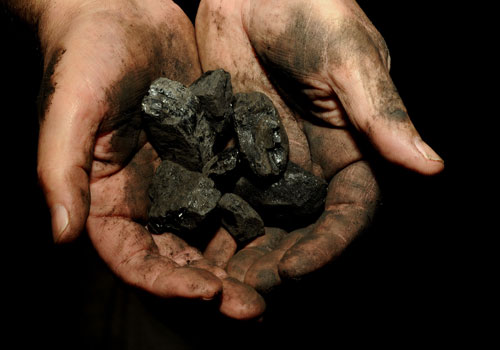
David Summers, Missouri S&T Curators’ Professor emeritus of mining engineering. Photos by B.A. Rupert

Edward I, known for being ruthless, banned the burning of coal in London because his mother didn’t like the smell of it. Despite threats of hangings, the ban didn’t work. People defied the king because coal was cheaper than wood.
Centuries later, coal is still the cheapest source of energy that we have. But the only way to get energy out of the dirty stuff is to burn it and release carbon dioxide in the process. It is now widely believed that increasing levels of carbon dioxide will raise global temperatures — which is why you might have heard a lot of talk about “clean coal” in recent years.
Unfortunately, there’s really no such thing as clean coal.
“Coal will always be dirty,” says David Summers, Curators’ Professor emeritus of mining engineering at S&T. “It gets your hands black. The soot is black dust.”
The main idea behind the clean coal push, then, is to come up with technologies to sequester the carbon dioxide. The plan is to capture the CO2 in coal-fired power plants and then to inject it as a gas or liquid into underground reservoirs. As an added benefit, Summers says the carbon dioxide injected into old oil reservoirs might help release an additional 10 percent of usable petroleum that could be pumped to the surface.
“In Missouri, 85 percent of the electrical energy comes from coal,” Summers says. “Wind and solar don’t really work here. All we’ve got as an alternative right now is biofuels. Coal is going to have to get us through the next 30 years.”
Much of the world is in the same boat. We have a couple of hundred years of coal left, and most, if not all, of it will likely be used — whether it’s “clean” or not. “A lot of countries are going to continue to rely on coal regardless, because that’s all they’ve got,” Summers says. “They’re not going to import expensive sources of energy.”
In the United States, current legislation calls for a nationwide cap on carbon dioxide pollution. Companies and utilities would be given carbon allocations. When a particular entity produces less than its allotment, it would be allowed to essentially sell carbon credits to other entities that need to produce more emissions.
Summers is skeptical when it comes to the effectiveness of so-called cap-and-trade regulations. “Regulations in this country won’t matter when it comes to climate change,” he predicts. “The rest of the world, including India and China, will still be burning coal. And more of it.”
The realities are sobering. But Summers, who is also a fan of extracting oil from algae as a biofuel, finds the debates and engineering challenges associated with energy concerns fascinating. He has been a contributing author to a popular energy blog called The Oil Drum and he recently started a new blog called Bit Tooth Energy.
If the problems associated with coal and pollution are to be finally solved, chances are good that some of the key problem-solvers will be found at Missouri S&T. But when it comes to future successes involving the sequestration of carbon dioxide, Summers leaves us with one last warning. “We don’t want to remove all of the carbon dioxide pollution from the air,” he says with a grin. “The plants need it.”
By Lance Feyh

An earlier version of this story was originally published in Missouri S&T Magazine.
Read additional stories from the Spring 2010 issue.
Recent Comments